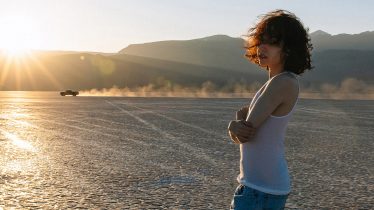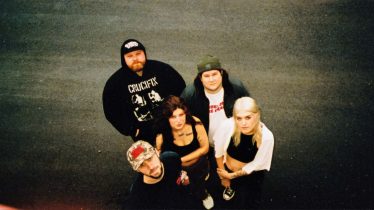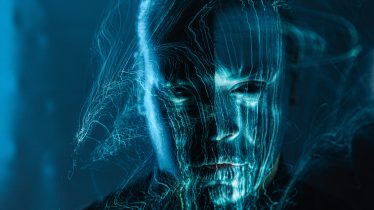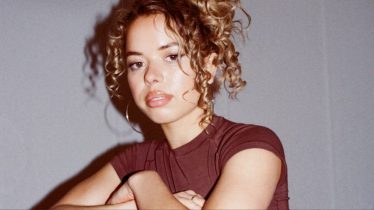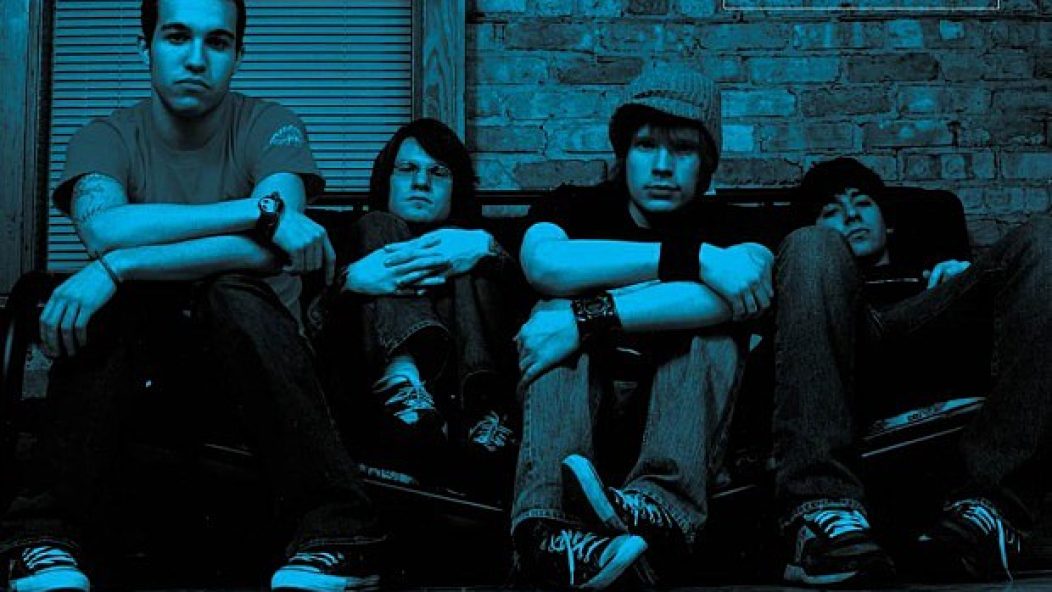
Interview: Photographer Ryan Bakerink on his iconic photograph for 'Take This To Your Grave'
Ryan Bakerink has shot numerous bands when they were on the cusp of breaking out including Paramore and Thursday. But none of his images are as iconic as his picture of Fall Out Boy for their seminal album Take This To Your Grave. Which is kind of funny when you realize that the image used was never intended to be the cover image. The Chicago-based photographer talks about working with Fall Out Boy, coming up in the Chicago scene and what the cover of Take This To Your Grave means to him 10 years later.
Interview: Brittany Moseley
Video Interview: TJ Horansky (Get to know Ryan even better with our bonus APTV video interview on page three!)
How did you start working with Fall Out Boy?
I had a pretty good relationship with a number of the bands around Chicago at that time, especially the bands that were on Victory Records. The owner of Fueled By Ramen called the PR person at Victory. She knew me, I had a great relationship with her, so she recommended me to Fueled By Ramen. Fueled By Ramen called me up, and we talked about the idea and this band called Fall Out Boy. I had heard of them around town, but I hadn’t actually heard them. I was like, “Yeah, this band sounds familiar; cool, lets do this.”
I called Pete up, and I remember being immediately impressed with him, not only with how focused he was, but the aesthetic vision he had beyond the music itself. He was willing to collaborate, he had the ideas and he wanted to work with me. Pete and I went over ideas on the phone prior to me showing up at their place. He was bouncing back and forth between wanting a picture of the band on the cover and this idea of staging a bedroom scene for the cover. After he and I talked about it for a while, we eventually decided to go with the bedroom scene that he had thought of—which I thought was a great idea.
I showed up at their apartment around 5 p.m. to meet up with the guys and start getting to work. Everyone was extremely friendly and extremely into it. But because it was clear that Pete had this vision for what the cover should be, the rest of the band kind of let us run with it. So he and I really worked to set up this bedroom scene, which we literally had to create with things from around the apartment. We stripped the largest bedroom—I think it was Pete’s bedroom—and just went around the apartment and found things from everybody else’s bedrooms and created this set. In hindsight, I kind of feel like the rest of the band just let Pete do all of the heavy lifting. It was exhausting. We were carrying beds and dresses and all these things into the other room, and we were just soaked in sweat.
Everyone wanted to contribute something to the image so everybody had their own say of what sort of toys were in the image or what sort of posters. I remember having a lengthy conversation with Patrick [Stump] about Elvis Costello, and how much he and I both loved him. I noticed that Patrick had Elvis Costello’s Armed Forces vinyl sitting out. I grabbed that and strategically placed that in the image, thinking it was going to be my contribution but playing it off of [as] Patrick’s.
So we build the set with the dresser by [the bed] and all of these toys and posters in it. One of the ideas was to have the sheet pulled back, just as if somebody got out of bed and left a letter to someone. Maybe their partner was in the bed, and somebody just got up and left. We hadn’t decided on the album title yet. So we did one with a letter, in a sealed envelope that said “take this to your grave” on it. And the other one said the title of the album’s other possible title, which was “to my favorite liar.” Then, Pete thought it would be a cool idea to actually have a person laying on the bed so we had an impromptu model; I think it was Pete’s girlfriend at the time. So we had her lie on the bed. I really loved that shot. I showed the Polaroid to Pete and he was like, “That’s the one. That’s the cover. That’s awesome.” I’m pretty sure Pete kept that Polaroid because he loved it so much. We showed it to the band and they loved it.
So we wrapped that up, and it was around 2 a.m. so we were all exhausted. But I realized that we didn’t have any shots of the band, and I knew they mentioned that they wanted solo shots and portrait shots for the album layout. So I shot each individual member around the apartment. It was getting later and later, and we needed some band shots. The only real option was this brick wall and this couch that they had—which was, to me, awesome because it was breaking in the middle. It was a broken futon, totally caved in. I’m like, “Well, this is really the only shot because this futon is perfect.” So I sat the band there and we did a handful of shots. We didn’t have a lot of time because it was late, in the early morning so there was no daylight. We threw up some studio lights and did some quick shots, more so just trying to pose them in an interesting way. I did those shots kind of on a whim, and that was that so I went home.
A few weeks later, I got a call from someone at the label saying, “We can’t use the cover shot because there are too many things in the image that are copyrighted; we can’t afford to get the rights to use them.” We were all pretty bummed out, and I should’ve known better. I figured they were just going to use something else, maybe they had to find another photographer at the last minute and come up with another idea. But then the album release party came up, about a month or two later, and it was at the Metro, here in Chicago. I saw Joe [Trohman], and he ran up to me with the album in his hand. He was like “Hey, Ryan this is great; look at the cover!” I took a look at it and thought, “Oh, cool, they used that image.” I was sort of in shock because I didn’t think they were going to use any of my images. But it was interesting how they ended up using the last image we took that night, and I didn’t even know if it was supposed to be used at all. I wound up really liking it,. I think it worked out in the story of Fall Out Boy. >>>
Do you like the image they ended up using more than the original?
I go back and forth. I love the original because looking back, it fits them so well with the content of their music, lyrically. But I do like the image they used because it was kind of their introduction into pop-punk, or the scene. I know they probably don’t like having their names right on the cover, but I thought that was cool.
Was the coloring of the image and the old jazz record feel something you added?
No, that was actually the designer. I just shot the image; it was full color. My vision was the image and placing them how they were. I’m blanking on the designer’s name, but he put that together. I don’t know if he worked with any of the members of the band on wanting it to be blue and putting their names on the cover, but I thought it was a cool touch.

(Right: The 2013 AP 303 reimagining of Bakerink's classic shot by Evan Hunt)
What was Chicago’s music scene like back then?
At that point, it was in 2003, and there were so many bands. Alkaline Trio were huge, Rise Against were blowing up; there were some other bands, Mest were big… For some reason, that pop-punk/emo scene was really blowing up—not just in Chicago, but in the Midwest. There were some Kansas City bands getting really big, and some bands in Minneapolis and MIlwaukee. But it was a cool scene to be in; everyone knew each other. Pete and Tim [McIlrath] from Rise Against were in a band together, and that was cool. I shot Tim a handful of times for Rise Against. It’s just so funny how everyone knew everyone and everyone was in a band with somebody else. It was great to be a part of it. For the following few years after Take This To Your Grave came out, I would run into members of Fall Out Boy quite often at shows and parties because we had mutual friends. I remember running into Joe at Tower Records—when those things still existed. They had those little music listening stations, and I was listening to Brand New’s Deja Entendu. Joe came up and was like, “Oh my God, you have to buy that album, it’s so good.” I barely even listened to it; I just bought it because he was so excited about it.
As far as your involvement in that scene, was it something you fell into?
It wasn’t actually something I fell into. I randomly built a really strong relationship and friendship with John Feldmann of Goldfinger. They had taken me on tour with them and done all sorts of things for me to photograph them. Through them, I started meeting other bands. I got to know Midtown, Gabe [Saporta] from Cobra Starship. I got close to them and into certain labels just because of that. It was a very organic friendship sort of thing, but I was also able to provide something beyond a friendship. I was able to provide them something they could use. I eventually built [friendships] with Thursday and all of these other bands that weren’t really Chicago-related. Thursday were on Victory, so that’s local scene oriented, I guess. So a lot of it did stem from the relationship I had with the Goldfinger—and they’re from LA. But John’s a producer and he knew so many bands. It all seemed very natural. It seemed like your group of friends expanding in a way. >>>
